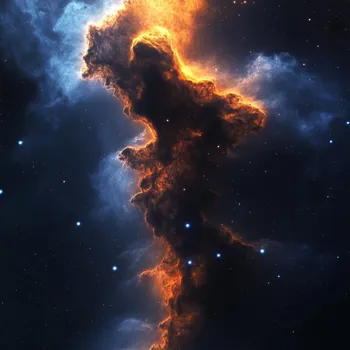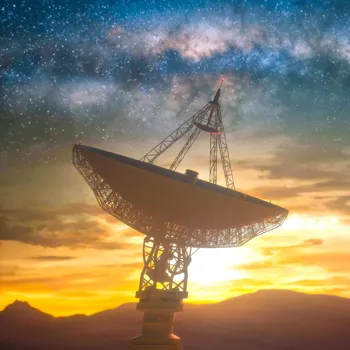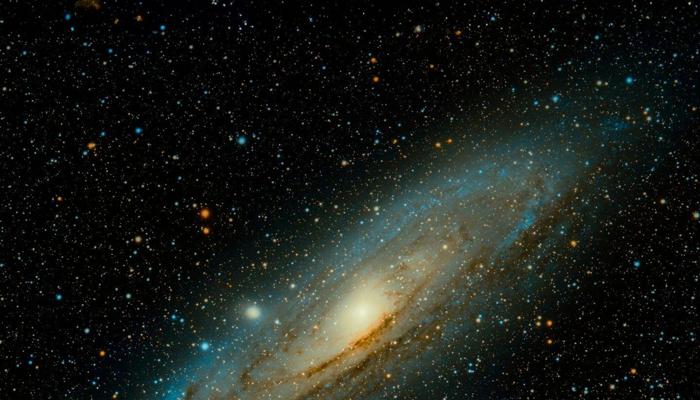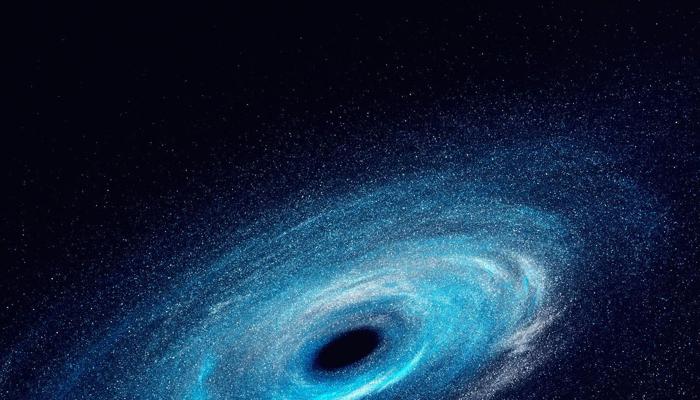Unravel the Mysteries of the Universe: Dark Matter, Energy, FRBs, Black Holes & the Wow! Signal. Curiosity awaits!
From Bharat to the wider world, the cosmos has always held a certain undeniable appeal
for us. It's a vast, mostly empty place, dotted with some truly mind-boggling things. While scientists have made amazing progress in understanding many celestial objects,some remain utterly baffling.

Let's take a look at ten of the most mysterious objects that continue to perplex astronomers today.
Dark Matter
This is the ultimate invisible guy of the universe. We can't see it, we can't touch it, but we know it's there because of its gravitational impact. Galaxies are spinning way too fast, if they were only held together by the gravity of the stuff we can see - stars, gas, and dust.

Something else must be providing extra gravitational muscle, and that "something" is dark matter. Scientists are trying to figure out what this matter could be: Is it made of tiny, faint stars? Is it made up of unknown particles interacting weakly with other stuff?
The search goes on, with researchers using supercomputers and underground detectors, desperately trying to unveil the mystery that encompasses most of the universe. No clear answer is coming yet, but the search is keeping scientists busy all across the world.
Dark Energy
If dark matter is the invisible scaffolding holding the universe together, dark energy is its accelerator pedal. While dark matter is slowing down expansion, dark energy is making it accelerate.

Back in the 1990s, astronomers were studying distant supernovae (exploding stars) and discovered that they were much fainter than expected. What does this mean? that the expansion rate of the universe is increasing.
The mysterious force that's causing it is called dark energy, & makes up 68% of the total energy in cosmos. The nature of dark energy is a major puzzle, giving even the most clever scientists headaches.
What is even more interesting is that this is still a mystery, that even experts are not in agreement of what this energy is. So dark matter makes up 27% of the universe.
Fast Radio Bursts (FRBs)
Imagine receiving a radio signal in the form of short, intense burst from space. These are FRBs. They pop up for just a thousandth of a second, but pack an incredible amount of energy.

The first FRB was found by chance in 2007, and since then, scientists have been working hard to trace the location and source of these bursts. One theory is that they are caused by extreme events like the merging of neutron stars (really big stars).
However, some FRBs repeat themselves, adding more mystery. Are there alien civilizations? Are they being caused by the release of energy during earthquakes? Now this is something which is still a mystery. No one has any clue really what this is about.
The Boötes Void
Imagine a region of the sky, 330 million light-years across, that's almost completely empty. It's like someone took a giant celestial vacuum cleaner to this space. It's not totally empty - there are a few galaxies there but compared to other parts of the universe; it is empty.

This emptiness is called the Boötes void or the Great Void. How did such a vast void form? One theory suggests that it happened when smaller voids merged together. Another idea is that it has to do with the distribution of dark matter in the universe, or perhaps primordial black holes.
Whatever the cause, the Boötes Void presents deep questions about the structure and evolution of our cosmos.
Supermassive Black Holes
Okay, we know black holes are places where gravity is so strong that nothing, not even light, can escape. But at the hearts of most galaxies lurk supermassive black holes, millions or even billions of times more massive than the sun! How did these things get so big? How did they start?

There are various theories. Some suggest they grew slowly over time, gathering up gas and dust. Others suggest that they formed directly from the collapse of massive star clusters. Studying their formation and growth is crucial for understanding how galaxies themselves evolve.
With all the current discoveries, this still remains a mystery.
The Wow! Signal. In 1977, a radio astronomer named Jerry Ehman was looking at data from the Big Ear radio telescope in Ohio when he got a surprise. He found a very strange signal, a narrow-band radio emission that was far stronger than anything else they were seeing, so bizarre that he actually wrote "Wow!" on the printout. The signal only lasted 72 seconds, and it never came back. The Wow! Signal has become famous as a possible candidate for a message from an extraterrestrial intelligence. Of course, there are lots of other possible, natural explanations - maybe it was a comet, or some other type of interference. The Wow! Signal, to this day, has no clear explanation.
The universe is full of questions, and sometimes the answers remain elusive. That's what makes astronomy so interesting!
The objects we've discussed have one thing in common: they push the boundaries of our current scientific understanding.

Dark matter and dark energy show that we may be missing a huge chunk of the universe's makeup. Fast radio bursts and the Boötes Void challenge our understanding of high-energy phenomena and large-scale structure. Supermassive black holes question their origin and evolution of galaxies and the Wow!
Signal teases us with the possibility of communication beyond Earth. As scientists continue to explore the vast expanse of space, they will surely unlock the secrets of these mysterious objects and reveal even more wonders of the cosmos.
There is still much research to be done and our understanding of the Universe is limited. We might not have the answers yet, but the very act of questioning drives scientific advancement and helps us view the world beyond the comforts of our planet.
Whether it is through building bigger telescopes, to advanced computing, science has advanced the knowledge to great things. Only time will tell what other secrets the universe has to give us.
And until that time comes, we will keep looking deeper exploring, searching and seeking answers to the various astronomical objects.
The journey of exploring and understanding the universe is a collective human endeavor.
Scientists from around the world share data, collaborate on projects, and build upon each others' discoveries. Institutions and research organizations continuously fund new missions and create new technologies to get more closer to understanding the vast unknown.
There are also amateur astronomists and enthusiasts who help in tracking celestial events and capturing images of the sky, contributing valuable information to be used by professionals. This collaborative spirit underscores the shared human curiosity to explore and understand our origins.
While our understanding of these objects might be incomplete, advances in technology and theory are constantly pushing the boundaries of human progress.
Future telescopes such as the Extremely Large Telescope (ELT) and space-based missions will allow scientists to observe these objects for more closely, gathering crucial details on their properties and behaviour.
Theoretical models are being refined to better explain the physical processes shaping them, for example, using theories of quantum gravity and particle physics to explore the mysteries of dark energy and matter.
With these new tools and approaches we can get the answer to the unanswered and solve enigmas of the skies.
AI Generated Content. Glance/InMobi shall have no liability for the content









